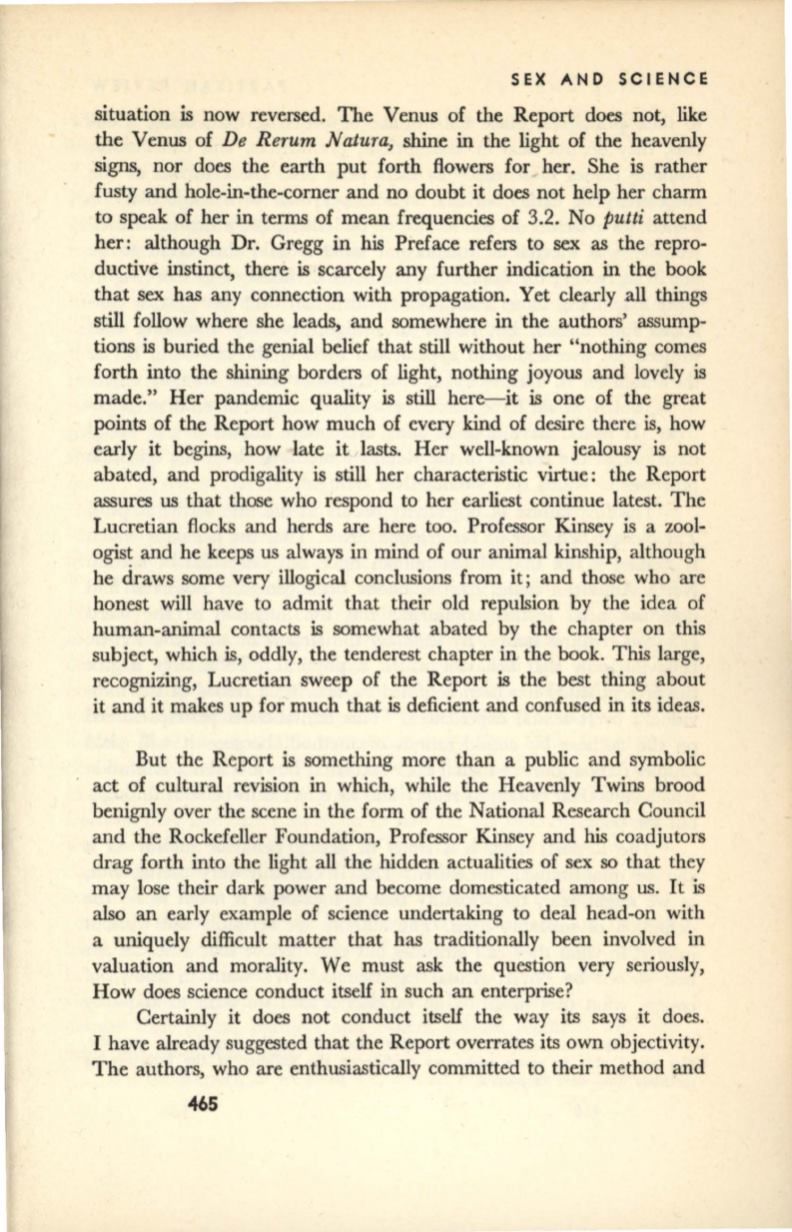
SEX AND SCIENCE
situation
is
now reversed. The Venus of the Report does not, like
the Venus of
De Rerum Natura,
shine in the light of the heavenly
signs, nor does the earth put forth flowers for her. She is rather
fusty and hole-in-the-corner and no doubt it does not help her charm
to speak of her in terms of mean frequencies of 3.2. No
putti
attend
her: although Dr. Gregg in his Preface refers to sex as the repro–
ductive instinct, there is scarcely any further indication in the book
that sex has any connection with propagation. Yet clearly all things
still follow where she leads, and somewhere in the authors' assump–
tions is buried the genial belief that still without her "nothing comes
forth into the shining borders of light, nothing joyous and lovely
is
made." Her pandemic quality is still here-it is one of the great
points of the Report how much of every kind of desire there is, how
early it begins, how late it lasts. Her well-known jealousy
is
not
abated, and prodigality is still her characteristic virtue: the Report
assures us that those who respond to her earliest continue latest. The
Lucretian flocks and herds are here too. Professor Kinsey
is
a zool–
ogist and he keeps us always in mind of our animal kinship, although
he draws some very illogical conclusions from it; and those who are
honest will have to admit that their old repulsion by the idea of
human-animal contacts is somewhat abated by the chapter on this
subject, which is, oddly, the tenderest chapter in the book. This large,
recognizing, Lucretian sweep of the Report
is
the best thing about
it and it makes up for much that is deficient and confused in its ideas.
But the Report is something more than a public and symbolic
act of cultural revision in which, while the Heavenly Twins brood
benignly over the scene in the form of the National Research Council
and the Rockefeller Foundation, Professor Kinsey and his coadjutors
drag forth into the light
all
the hidden actualities of sex so that they
may lose their dark power and become domesticated among us. It is
also
an early example of science undertaking to deal head-on with
a uniquely difficult matter that has traditionally been involved in
valuation and morality. We must ask the question very seriously,
How does science conduct itself in such an enterprise?
Certainly it does not conduct itself the way its says it does.
I have already suggested that the Report overrates its own objectivity.
The authors, who are enthusiastically committed to their method and
465


